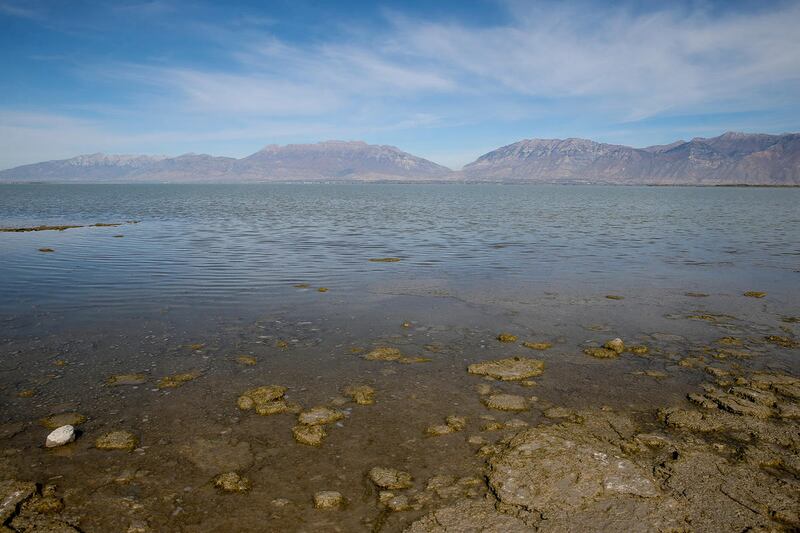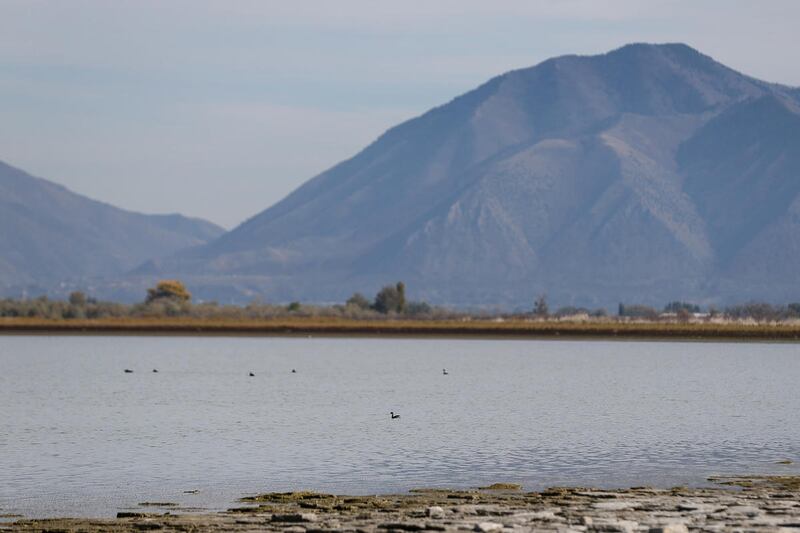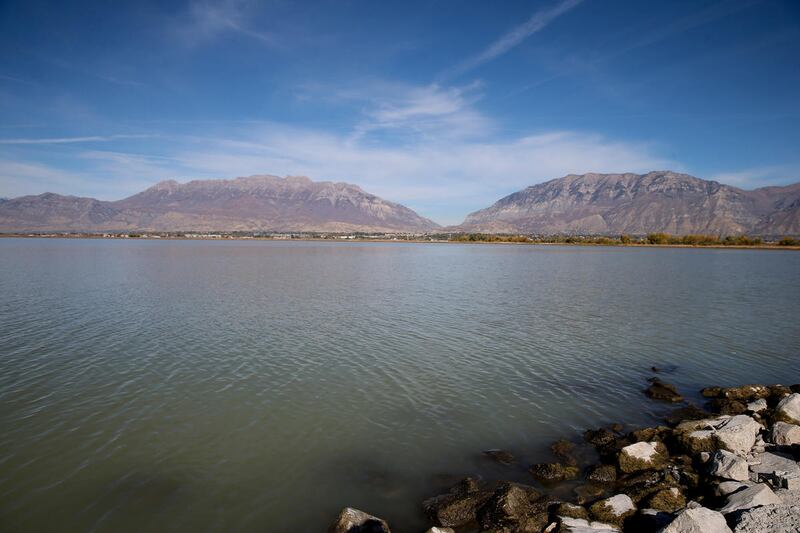SALT LAKE CITY — Scofield State Park manager Jonathan Hunt spent an anxious summer looking at the algae-infested waters of the high mountain reservoir devoid of boats, fishermen and parents with their children splashing about.
At a time when the place should have been teeming with water enthusiasts, the waters were still.
Even with this, he was grateful that science backed the decision to declare the water off limits, to keep people safe until the threat of potentially deadly toxins had vanished.
"We had the numbers and we knew what the unacceptable numbers were," he said. "It was good to get a baseline."
This summer's unprecedented harmful algal bloom outbreak "closed" Utah Lake to public access, shut down marinas there and infected Payson Lakes as well as Scofield Reservoir.
Utah Lake's problems spread to the Jordan River which then spread to canal companies supplying water for lawns and farmers' crops.
Hundreds of people swamped the Utah Poison Control Center with calls of concern. Dozens of documented cases of exposure created a public health alarm due to toxins that that can affect the nervous system or cause respiratory ailments.
"A lot of people reported ill from being in the water," said Utah Lake State Park Manager Jason Allen. "It was the first time we had to close the entire lake."
Both state parks took hits in revenue at a time when they are the busiest.
Hunt, who also manages Huntington and Millsite reservoirs, said those parks had visitation increases of 24 percent and 32 percent. Scofield, which should have been booming too, had healthy campground attendance, but the lake was empty of recreationers.
"We had cabin owners who didn't show up, the rural gas station and convenience store had a similar drop. The whole area was hit pretty hard," he said.
Algal blooms are fed by an over abundance of the nutrients phosphorus and nitrogen. Naturally occurring, they also spike because of activities like agriculture and waste water treatment plant discharges, as is the case with Utah Lake.
The Utah Department of Environmental Quality has set numerical limits for the amount of phosphorus that can be discharged from those plants, set to take effect in 2017.
It had already launched into a study to get at the problem and had protocols in place because of an outbreak in 2014.
But this year's problem at Utah Lake was exacerbated by five years of drought that dropped its levels to the lowest in more than 25 years.
The hot temperatures fueled the massive bloom, which covered the majority of what is one of the largest fresh water lakes west of the Mississippi.
With that lake feeding Jordan River, feeding canals that water farms and homes, the problem of contamination hit Salt Lake County hard.
The Utah Department of Agriculture and Food advised farmers to refrain from watering crops with infected water, but subsequent testing showed no contamination of the produce. But the scare of exposure prompted emergency meetings and multiple advisories.
"There was tension," said Riverton Mayor Bill Applegarth. "It generates from the fact that our yards are very important to us. It is a very important part of our culture to have our lawns looking nice and our flowers beautiful. We were literally being threatened with the uncertainty of our water supply."
The toxic blooms didn't affect drinking water, but Riverton City and others in southern Salt Lake County were faced with the dim prospect of shutting down secondary water supplies at a time when it was tinder dry.
That difficult question, combined with the health impacts, the thousands spent on response by multiple agencies and the closure of state parks put the problem of algal blooms in the public eye — and demands answers on what happens next.
"I think there are two things that have to come together for a positive future for secondary water in the valley. One is those political and scientific leaders have to come to grips with is how we help nature heal Utah Lake," Applegarth said.
"In addition, I believe with secondary water, we have to become more wise with how much we use and the plants we are planting, because we do live in a desert."
Eric Ellis, executive director of the Utah Lake Commission, said the scope of the algal blooms — impacting water bodies aside from Utah Lake — should emphasize to people that the problem is not confined to one "sick" water body.
"It turned out to be helpful that these other lakes experienced the same situation so it was not such an oddity for Utah Lake," he said. "Going forward, we are going to have to have a good communication push to help people to understand the realities of that."
Walt Baker, director of the Utah Division of Water Quality, said a federal grant allowed them to deploy a trio of water data sondes that will continuously monitor for conditions at Utah Lake. Two others can be used elsewhere, such as Farmington Bay, or Scofield, for example.
The state Water Quality Board approved $1 million in funding to allow the agency to move into the next phase of an extensive study to get at the nutrient problem at Utah Lake, and what possible avenues exist for tackling it.
By 2017, the division will come up with standards for nutrients at the key headwater streams and rivers in the state and Utah Lake, already a priority, will get additional analysis.
If there was any good that came from the outbreak, it was the test of the system — water quality scientists, public health agencies, cities, counties and state agencies working in tandem to respond and then communicate information to the public, said Ralph Clegg, executive director of the Utah County Health Department.
"I think we cooperated very well," he said. "There were things we were able to control, but you can't shut down living."
Baker said there was a work plan developed last year for Utah Lake, and this summer's experience will help all those involved to build upon that.
The pervasive algal bloom tested his agency and others, posing the challenge of where to monitor, when to monitor, how that is paid for and ultimately, who responds, he added.
"Money is not infinite, and you have to choose priorities," he said. "We have to figure out budgetarily how we respond to these blooms."
Email: amyjoi@deseretnews.com
Twitter: amyjoi16







